Omeprazole
Synonym(s):5-Methoxy-2-[[(4-methoxy-3,5-dimethyl-2-pyridinyl)methyl]sulfinyl]-1H-benzimidazole;Antra;Losec;Omeprazole;
- CAS NO.:73590-58-6
- Empirical Formula: C17H19N3O3S
- Molecular Weight: 345.42
- MDL number: MFCD00083192
- EINECS: 615-996-8
- SAFETY DATA SHEET (SDS)
- Update Date: 2025-12-23 13:58:55

What is Omeprazole?
Description
Omeprazole is a potent gastric antisecretory agent with selective inhibitory effect on the H+,K+-ATPase proton pump. It is highly effective in the treatment of duodenal ulcer and Zollinger-Ellison syndrome, and is reportedly superior to ranitidine in the management of reflux esophagitis.
Chemical properties
White Crystalline Solid
Originator
Astra (Sweden)
The Uses of Omeprazole
Omeprazole is a proton pump inhibitor used to treat diseases like gastroesophageal reflux disease (GERD), used for gastric and duodenal ulcers, reflux or erosive esophagitis, and Zollinger-Ellison syndrome. It is also effective for gastric and duodenal ulcers that are ineffective with H2 receptor antagonists. Injections of Omeprazole can also be used for: 1 gastrointestinal bleeding, such as peptic and anastomic ulcer bleeding, and the prevention of severe diseases (such as cerebral hemorrhage, severe trauma, etc.) and gastric surgery caused by upper intestinal bleeding; 2 acute gastric mucosal damage complicated by stress or nonsteroidal anti-inflammatory drugs; 3 general anesthesia, post-surgery, or coma patients, to prevent acid reflux and aspiration pneumonia; 4 Combined with amoxicillin and clarithromycin, or with metronidazole and clarithromycin, it can effectively kill Helicobacter pylori (Hp).
Indications
Omeprazole, according to the FDA label is a proton pump inhibitor (PPI) used for the following purposes:
Treatment of active duodenal ulcer in adults
Eradication of Helicobacter pylori to reduce the risk of duodenal ulcer
recurrence in adults
Treatment of active benign gastric ulcer in adults
Reduction of risk of upper gastrointestinal (GI) bleeding in critically ill adult patients.
Treatment of symptomatic gastroesophageal reflux disease (GERD) in
patients 1 year of age and older
Treatment of erosive esophagitis (EE) due to acid-mediated GERD in
patients 1 month of age and older
Maintenance of healing of EE due to acid-mediated GERD in patients 1
year of age and older
Pathologic hypersecretory conditions in adults
Background
Originally approved by the FDA in 1989, omeprazole is a proton-pump inhibitor, used to treat gastric acid-related disorders. These disorders may include gastroesophageal reflux disease (GERD), peptic ulcer disease, and other diseases characterized by the oversecretion of gastric acid. This drug was the first clinical useful drug in its class, and its approval was followed by the formulation of many other proton pump inhibitor drugs . Omeprazole is generally effective and well-tolerated, promoting its popular use in children and adults .
Definition
ChEBI: Omeprazole is a member of the class of benzimidazoles that is 1H-benzimidazole which is substituted by a [4-methoxy-3,5-dimethylpyridin-2-yl)methyl]sulfinyl group at position 2 and a methoxy group at position 5.
Preparation
The antiulcer agent omeprazole is produced from 2,3,5-trimethylpyridine N-oxide.
Synthesis and Structure of Omeprazole
Steps: 2-(Lithium methyl sulphinyl)-5-methoxy-1H benzimidazole 20g was reacted with 2-chloro-3,5-dimethyl-4-methoxy pyridine 21 g to form sulphide intermediate and then converted to Omeprazole when treated with m-CPBA which used as anoxidizingagents. The acetamide-sulfide compounds modification are oxidised to form the amide sulfinyl compound and gives the sulfinyl carboxylate or salts upon alkaline hydrolysis.On further decarboxylation leads to the target molecules. The residual, unreacted salt, inorganic by-products and other minor by-products can be easily purified by a simple washing from omeprazole or lansoprazole. The amide compounds containing crystalline solids as opposed to the sulphide and sulfoxides of the reported procedures.
DOI: http://dx.doi.org/10.20902/IJPTR.2019.120307
What are the applications of Application
Omeprazole is a benzimidazole with selective and irreversible proton pump inhibition activity. Omeprazole forms a stable disulfide bond with the sulfhydryl group of the hydrogen-potassium (H+ - K+) ATPase found on the secretory surface of parietal cells, thereby inhibiting the final transport of hydrogen ions (via exchange with potassium ions) into the gastric lumen and suppressing gastric acid secretion. This agent exhibits no anticholinergic activities and does not antagonize histamine H2 receptors. Omeprazole Pellets are used in the treatment of Gastroesophageal reflux disease (GERD): A condition in which backward flow of acid from the stomach causes heartburn and injury of the food pipe (esophagus).
brand name
Prilosec (Astra Zeneca).
Therapeutic Function
Antiulcer
World Health Organization (WHO)
Omeprazole was introduced in the 1980s. It belongs to a group of agents that have an inhibitory effect on the secretion of hydrochloric acid in the stomach (gastric acid proton pump inhibitors) and is used in the treatment of upper gastrointestinal tract disorders. The Committee for Proprietary Medicinal Products of the European Commission has concluded that a causal association between the reactions reported in Germany and the use of omeprazole had not been established. Nevertheless oral administration should be preferred. (Reference: (CPMPPO) Pharmacovigilance Opinion, No.16 , , 25 July 1994)
General Description
Omeprazole, 5-methoxy-2-(((4-methoxy-3, 5-dimethyl-2-pyridinyl)methyl) sulfinyl)-1Hbenzimidazole(Losec), is a white to off-white crystallinepowder with very slight solubility in water. Omeprazole isan amphoteric compound (pyridine N, pKa 4.06; benzimidazoleN-H, pKa 0.79), and consistent with the proposedmechanism of action of the substituted benzimidazoles, isacid labile. Hence, the omeprazole product is formulatedas delayed-release capsules containing enteric-coatedgranules.
The absolute bioavailability of orally administeredorneprazole is 30% to 40% related to substantial first-passbiotransformation. The drug has a plasmahalf-life of about 1 hour. Most (77%) of an oral dose ofomeprazole is excreted in the urine as metabolites with insignificantantisecretory activity. The primary metabolitesof omeprazole are 5-hydroxyomeprazole (CYP2C19) andomeprazole sulfone (CYP3A4). The antisecretory actions ofomeprazole persist for 24 to 72 hours, long after the drughas disappeared from plasma, which is consistent with itssuggested mechanism of action involving irreversible inhibitionof the proton pump.
Omeprazole is approved for the treatment of heartburn,GERD, duodenal ulcer, erosive esophagitis, gastric ulcer,and pathological hypersecretory conditions.
Biological Activity
H + ,K + -ATPase inhibitor (IC 50 = 5.8 μ M) that displays antisecretory and antiulcer activity. Inhibits gastric acid secretion (IC 50 = 0.16 μ M for histamine-induced acid formation) and reduces gastric lesion formation induced by a variety of ulcerative stimuli. Antibacteral against Helicobacter pylori in vitro . Also inhibits CYP2C19, CYP2C9 and CYP3A (K i values are 3.1, 40.1 and 84.4 μ M respectively) and blocks swelling-dependent chloride channels (ICIswell).
Biochem/physiol Actions
Omeprazole binds covalently to proton pump (H+, K+-ATPase) and inhibits gastric secretion. It is useful in ameliorating the effects of peptic oesophagitis, duodenal and gastric ulcer. Omeprazole is preferred over antagonists of histamine H2-receptor and ranitidine for its higher efficiency. It is also useful in treating Zollinger-Ellison syndrome.
Pharmacokinetics
Effects on gastric acid secretion
This drug decreases gastric acid secretion . After oral administration, the onset of the antisecretory effect of omeprazole is usually achieved within one hour, with the maximum effect occurring by 2 hours after administration. The inhibitory effect of omeprazole on acid secretion increases with repeated once-daily dosing, reaching a plateau after four days .
Effects on serum gastrin
In studies of 200 or more patients, serum gastrin levels increased during the first 1-2 weeks of daily administration of therapeutic doses of omeprazole. This occurred in a parallel fashion with the inhibition of acid secretion. No further increase in serum gastrin occurred with continued omeprazole administration. Increased gastrin causes enterochromaffin-like cell hyperplasia and increased serum Chromogranin A (CgA) levels. The increased CgA levels may lead to false positive results in diagnostic studies for neuroendocrine tumors .
Enterochromaffin-like (ECL) cell effects
Human gastric biopsy samples have been obtained from more than 3000 pediatric and adult patients treated with omeprazole in long-term clinical studies. The incidence of enterochromaffin-like cell hyperplasia in these studies increased with time; however, no case of ECL cell carcinoids, dysplasia, or neoplasia have been identified in these patients. These studies, however, are of insufficient in power and duration to draw conclusions on the possible influence of long-term administration of omeprazole in the development of any premalignant or malignant conditions .
Other effects
Systemic effects of omeprazole in the central nervous system, cardiovascular and respiratory systems have not been found to date. Omeprazole, given in oral doses of 30 or 40 mg for 2-4 weeks, showed no effect on thyroid function, carbohydrate metabolism, or circulating levels of parathyroid hormone, cortisol, estradiol, testosterone, prolactin, cholecystokinin or secretin .
Clinical Use
Omeprazole is a proton-pump inhibitor used in the management and treatment of several conditions, including uncomplicated heartburn, peptic ulcer disease, gastrointestinal reflux disease, Zollinger-Ellison syndrome, multiple endocrine adenomas, systemic mastocytosis, erosive esophagitis, gastric ulcers, and helicobacter pylori infection.
Side Effects
The aforementioned adverse events published as case reports seem to be extremely rare relative to the large number of treatment courses with omeprazole of well above 100 million. Some of these adverse effects, however, disappeared upon cessation of omeprazole therapy and reappeared upon rechallenge suggesting a causal relationship. These include cases of myopathy , neuromyositis , erythema nodosum , arthralgia , pityriasis rosea-like skin eruption , hemolytic anemia , interstitial nephritis , , CNSsymptoms , , and acute gout .
Veterinary Drugs and Treatments
Omeprazole is potentially useful in treating both gastroduodenal ulcer disease and to prevent or treat gastric erosions caused by ulcerogenic drugs (e.g., aspirin). An oral paste product is labeled for the treatment and prevention of recurrence of gastric ulcers in horses.
Drug interactions
Potentially hazardous interactions with other drugs
Anticoagulants: effect of coumarins possibly
enhanced.
Antiepileptics: effects of phenytoin possibly
enhanced.
Antifungals: absorption of itraconazole and
ketoconazole reduced; avoid with posaconazole;
concentration increased by voriconazole.
Antivirals: reduced atazanavir concentration
- avoid; AUC of saquinavir increased by 82%
(increased risk of toxicity) - avoid; concentration of
raltegravir possibly increased - avoid; concentration
of rilpivirine reduced - avoid; concentration of
omeprazole reduced by tipranavir.
Ciclosporin: variable response; mostly increase in
ciclosporin level.
Cilostazol: increased cilostazol concentration -
reduce cilostazol dose.
Clopidogrel: avoid due to reduced efficacy of
clopidogrel.
Cytotoxics: possibly reduced excretion of
methotrexate; avoid with erlotinib and vandetanib;
possibly reduced dasatinib and lapatinib absorption
- avoid with dasatinib; possibly reduced absorption
of pazopanib.
Tacrolimus: may increase tacrolimus concentration.
Ulipristal: reduced contraceptive effect, avoid with
high dose ulipristal.
Metabolic pathway
When male humans are given 14C-omeprazole orally, an average of 79% of the dose is recovered in the urine in 96 h. Omeprazole is completely metabolized and at least six metabolites are identified. Two major metabolites are hydroxyomeprazole and omeprazole acid.
Metabolism
Omeprazole is heavily metabolized in the liver by the cytochrome P450 (CYP) enzyme system. The main part of its metabolism depends on the polymorphically expressed CYP2C19, which is responsible for the formation of hydroxyomeprazole, the major metabolite found in plasma. The remaining part depends on CYP3A4, responsible for the formation of omeprazole sulphone .
Metabolism
Omeprazole is completely metabolised in the liver by the cytochrome P450 system to form inactive metabolites which are excreted mostly in the urine and to a lesser extent in bile. CYP2C19 produces hydroxyomeprazole, the major metabolite, CYP3A4 produces omeprazole sulphone.
Toxicity
Oral acute (LD50): 4000 mg/kg (mouse), 2210 mg/kg (rat) .
Overdose
Symptoms of overdose include confusion, drowsiness, blurred vision, tachycardia, nausea, diaphoresis, flushing, headache, and dry mouth.
Carcinogenesis and mutagenesis
In 24-month studies in rats, a dose-related significant increase in gastric carcinoid tumors and ECL cell hyperplasia was seen in male and female animals. Carcinoid tumors have also been found in rats treated with a fundectomy or long-term treatment with other proton pump inhibitors, or high doses of H2-receptor antagonists .
Omeprazole showed positive clastogenic effects in an in vitro human lymphocyte chromosomal aberration study, in one of two in vivo mouse micronucleus tests, and in an in vivo bone marrow cell chromosomal aberration test. Omeprazole tested negative in the in vitro Ames test, an in vitro mouse lymphoma cell forward mutation assay, and an in vivo rat liver DNA damage assay .
The use in breastfeeding
Limited data indicate that omeprazole may be present in human milk. There is currently no information on the effects of omeprazole on the breastfed infant or production of milk. The benefits of breastfeeding should be considered along with the level of need for omeprazole and any potential adverse effects on the breastfed infant from omeprazole .
Effects on fertility
Effects of omeprazole at oral doses up to 138 mg/kg/day in rats (about 34 times an oral human dose) was found to have no impact on fertility and reproductive performance .
Absorption
Omeprazole delayed-release capsules contain an enteric-coated granule formulation of omeprazole (because omeprazole is acid-labile), so that absorption of omeprazole begins only after the granules exit the stomach .
Absorption of omeprazole occurs rapidly, with peak plasma concentrations of omeprazole achieved within 0.5-3.5 hours .
Absolute bioavailability (compared with intravenous administration) is approximately 30-40% at doses of 20-40 mg, largely due to pre-systemic metabolism. The bioavailability of omeprazole increases slightly upon repeated administration of omeprazole delayed-release capsules .
Mode of action
Omeprazole is a proton pump inhibitor which can specifically act on gastric parietal cell proton pump sites and transform into the active form of sulfonamide, then irreversibly binds to the proton pumps through disulfide bonds, generating a sulfonamide and proton pump compound (H + -K + -ATP), thereby inhibiting the enzymatic activity, preventing the H+ in parietal cells from being transported to the stomach cavity. It has a strong and persistent inhibitory role on gastric acid secretion caused by basal gastric acid and pentapeptide gastric acid secretions, greatly reducing gastric acid within the gastric juice. Rapid, reversible, and no H2 antagonist-induced psychiatric side effects.
References
1) Satoh?et al.?(1989),?Antisecretory and antiulcer activities of a novel proton pump inhibitor AG-1749 in dogs and rats; J. Pharmacol. Exp. Ther.,?248?806
2) Kuzin?et al.?(2018),?Effects of the Proton Pump Inhibitors Omeprazole and Pantoprazole on the Cytochrome P450-Mediated Metabolism of Venlafaxine; Clin. Pharmacokinet,?57?729
3) Schmarda?et al.?(2000)?The gastric H,K-ATPase blocker Iansoprazole is an inhibitor of chloride channels; Br. J. Pharmacol.,?129?598
4) Maejima?et al.?(2020),?Oral oxytocin delivery with proton pump inhibitor pretreatment decreases food intake; Peptides,?128?170312
5) Wantanabe?et al.?(2020),?Selective Targeting of Virus Replication by Proton Pump Inhibitors; Sci. Rep.,?10?4003
6) Bojkova?et al.?(2020),?SARS-CoV2 and SARS-CoV differ in their cell tropism and drug sensitivity profiles;?bioRxiv, epub ahead of print?DOI: 10.1101/2020.04.03.024257
Properties of Omeprazole
| Melting point: | 156°C |
| Boiling point: | 600.0±60.0 °C(Predicted) |
| Density | 1.332 g/cm3 |
| Flash point: | 9℃ |
| storage temp. | 2-8°C |
| solubility | H2O: 0.5 mg/mL |
| form | solid |
| pka | pKa 4.14/8.9(H2O,t =25,I=0.025) (Uncertain) |
| color | white |
| Water Solubility | Soluble in water (0.5 mg/ml), DMSO (25 mg/ml), and ethanol (4.5 mg/ml). |
| Merck | 14,6845 |
| Stability: | Stable, but hygroscopic and photosensitive. Incompatible with strong oxidizing agents. Store in the dark. |
| CAS DataBase Reference | 73590-58-6(CAS DataBase Reference) |
| EPA Substance Registry System | 1H-Benzimidazole, 6-methoxy-2-[[(4-methoxy-3,5-dimethyl-2-pyridinyl)methyl]sulfinyl]- (73590-58-6) |
Safety information for Omeprazole
| Signal word | Danger |
| Pictogram(s) |
 Flame Flammables GHS02  Skull and Crossbones Acute Toxicity GHS06  Exclamation Mark Irritant GHS07  Health Hazard GHS08 |
| GHS Hazard Statements |
H225:Flammable liquids H303:Acute toxicity,oral H315:Skin corrosion/irritation H319:Serious eye damage/eye irritation H335:Specific target organ toxicity, single exposure;Respiratory tract irritation H370:Specific target organ toxicity, single exposure |
| Precautionary Statement Codes |
P210:Keep away from heat/sparks/open flames/hot surfaces. — No smoking. P260:Do not breathe dust/fume/gas/mist/vapours/spray. P261:Avoid breathing dust/fume/gas/mist/vapours/spray. P264:Wash hands thoroughly after handling. P264:Wash skin thouroughly after handling. P280:Wear protective gloves/protective clothing/eye protection/face protection. P311:Call a POISON CENTER or doctor/physician. P301+P310:IF SWALLOWED: Immediately call a POISON CENTER or doctor/physician. P304+P340:IF INHALED: Remove victim to fresh air and Keep at rest in a position comfortable for breathing. P305+P351+P338:IF IN EYES: Rinse cautiously with water for several minutes. Remove contact lenses, if present and easy to do. Continuerinsing. P405:Store locked up. |
Computed Descriptors for Omeprazole
| InChIKey | SUBDBMMJDZJVOS-UHFFFAOYSA-N |
Omeprazole manufacturer
Gangwal Healthcare Pvt Ltd
SRINI PHARMACEUTICALS PVT LTD
New Products
Indole Methyl Resin tert-butyl 9-methoxy-3-azaspiro[5.5]undecane-3-carboxylate Boc-His(Boc)-OH 2-CTC Resin 4-Chloro-7-tosy1-7Hpyrrolo[2,3-d]pyrimidine 5,7-Dibromo-1H-indole 2,5-dichloro-N-hydroxy-4,6-dimethylpyridine-3-carboximidamide 2,2-Dimethoxy-7-azaspiro[3.5]nonane hydrochloride 4-chloromethyl-5-methyl-1,3-dioxol-2-one (DMDO-Cl) R-2-BENZYLOXY PROPIONIC ACID 1,1’-CARBONYLDIIMIDAZOLE 1,1’-CARBONYLDI (1,2-4 TRIAZOLE) N-METHYL INDAZOLE-3-CARBOXYLIC ACID 4-((2-hydroxyethyl)thio)benzoic acid 1-(TERT-BUTOXYCARBONYL)-2-PYRROLIDINONE Methyl 6-methylnicotinate 3-Pyridineacrylic acid tert-Butyl carbazate TETRAHYDRO-2H-PYRAN-3-OL 2-((4-morpholinophenylamino) (methylthio) methylene) malononitrile 3-(4-morpholinophenylamino)-5-amino-1H-pyrazole-4-carbonitrile 2,4-dihydroxybenzaldehyde 1,3-Diethyl-1,3-Diphenylurea Methyl 2-methylquinoline-6-carboxylateRelated products of tetrahydrofuran
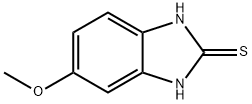
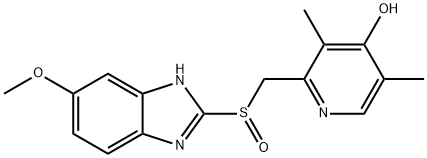
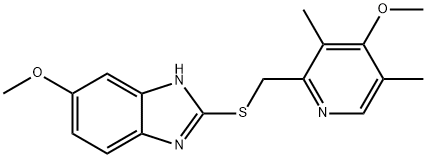
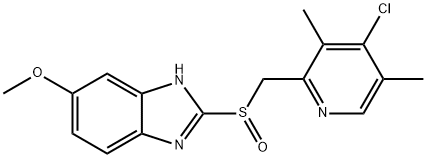

![OMEPRAZOLE IMP. C (EP): 5-METHOXY-2-[[(4-METHOXY-3,5-DIMETHYLPYRIDIN-2-YL)METHYL]SULPHANYL]-1H-BENZIMIDAZOLE (UFIPRAZOLE) MM STANDARD](https://img.chemicalbook.in/)
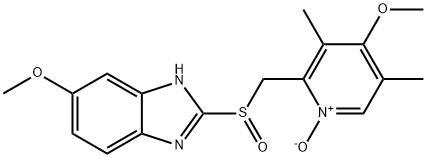
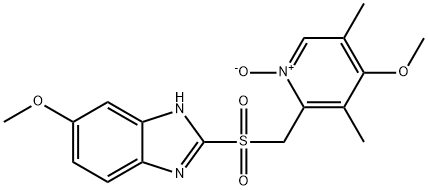
You may like
-
 OMEPRAZOLE USP 99%View Details
OMEPRAZOLE USP 99%View Details -
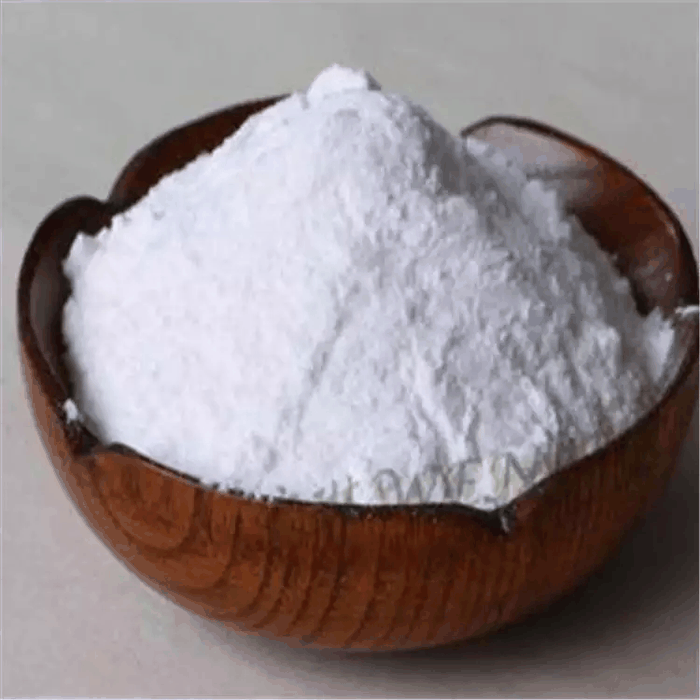 Omeprazole 98%View Details
Omeprazole 98%View Details -
 Omeprazole 98%View Details
Omeprazole 98%View Details -
 Omeprazole 99%View Details
Omeprazole 99%View Details -
 Omeprazole 98%View Details
Omeprazole 98%View Details -
 Omeprazole 98%View Details
Omeprazole 98%View Details -
 Omeprazole 98%View Details
Omeprazole 98%View Details -
 Omeprazole 98%View Details
Omeprazole 98%View Details
